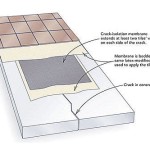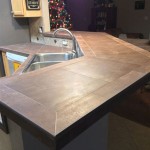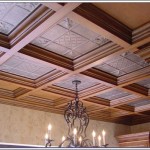Making Your Home Soundproof with Acoustic Wall Tiles Depot
Unwanted noise intrusion can significantly impact the comfort and usability of a home. Whether it stems from traffic, noisy neighbors, or internal sources like home theaters or music studios, excessive noise can disrupt sleep, hinder concentration, and generally degrade the quality of life. One effective solution for mitigating this issue is soundproofing, and acoustic wall tiles, particularly those sourced from Acoustic Wall Tiles Depot, offer a practical and aesthetically pleasing route to achieving a quieter, more peaceful home environment.
Soundproofing, in essence, is the process of reducing sound transmission from one space to another. This is achieved through a combination of techniques that address the different ways sound travels. Unlike sound absorption, which aims to reduce reverberation within a room rather than prevent sound from leaving or entering, soundproofing focuses on blocking or reducing the pathways for sound to travel. This involves addressing issues related to air gaps, structural vibrations, and the density of building materials.
Acoustic Wall Tiles Depot provides a variety of wall tiles specifically designed to improve a room's acoustic properties and contribute to soundproofing efforts. These tiles differ significantly from standard decorative wall coverings in their materials, construction, and intended purpose. They are engineered to absorb sound energy, reducing echoes and reverberation, and, when properly installed in conjunction with other soundproofing methods, can contribute to a noticeable reduction in sound transmission.
Understanding Sound Transmission and Acoustic Principles
To effectively utilize acoustic wall tiles for soundproofing, it is essential to understand the basic principles of sound transmission. Sound travels through the air as waves, and these waves can be transmitted through solid materials like walls, floors, and ceilings. The amount of sound that is transmitted is influenced by the density and mass of the material. Denser, heavier materials are generally more effective at blocking sound transmission.
Sound can also travel through flanking paths, which are structural pathways that bypass the primary barrier, such as a wall. This can include gaps around doors and windows, ventilation ducts, and even the building's framing itself. Addressing these flanking paths is crucial for effective soundproofing.
Acoustic wall tiles work primarily by absorbing sound energy. When sound waves strike the surface of a tile, the porous material converts a portion of the sound energy into heat through friction. This reduces the amount of sound that is reflected back into the room, thus minimizing reverberation and improving the overall acoustic environment. While acoustic tiles primarily function as sound absorbers, when used in conjunction with sound-blocking methods, they contribute to the overall soundproofing effectiveness of a room.
The effectiveness of acoustic wall tiles is often measured by their Noise Reduction Coefficient (NRC). The NRC is a single-number rating that indicates the average amount of sound absorbed by a material. An NRC of 0 indicates perfect reflection, while an NRC of 1 indicates perfect absorption. Higher NRC values are generally desirable for soundproofing applications. The specific NRC rating of Acoustic Wall Tiles Depot products should be carefully considered when selecting the appropriate tiles for a particular soundproofing project.
Selecting the Right Acoustic Wall Tiles from Acoustic Wall Tiles Depot
Acoustic Wall Tiles Depot offers a diverse selection of acoustic wall tiles, each with unique properties and aesthetic characteristics. Choosing the right tiles for a specific application involves considering several factors, including the desired level of soundproofing, the aesthetic requirements of the space, and the budget available for the project.
Material composition is a key consideration. Acoustic wall tiles are often made from materials such as fiberglass, mineral wool, recycled cotton, or acoustic foam. Each material has its own advantages and disadvantages in terms of sound absorption, durability, and cost. Fiberglass and mineral wool tiles generally offer excellent sound absorption performance but may require careful handling due to potential fiber shedding. Recycled cotton tiles are an environmentally friendly option with good acoustic properties. Acoustic foam tiles are lightweight and relatively inexpensive but may not be as durable as other options.
Thickness and density also play a significant role in the effectiveness of acoustic wall tiles. Thicker, denser tiles generally provide better sound absorption and soundproofing performance. However, thicker tiles may also be more expensive and require more space. The optimal thickness and density will depend on the specific soundproofing goals and the characteristics of the room.
Acoustic Wall Tiles Depot offers tiles in a variety of sizes, shapes, and colors, allowing for a high degree of design flexibility. The tiles can be arranged in a variety of patterns to create visually appealing and acoustically effective wall treatments. Some tiles are designed to be easily painted or fabric-wrapped, allowing for further customization to match the existing decor of the room. When selecting tiles, it is important to consider the overall aesthetic impact and how the tiles will integrate with the existing design elements.
Beyond the tiles themselves, the installation method can also affect the overall soundproofing performance. Acoustic Wall Tiles Depot typically provides detailed installation instructions for each type of tile. Following these instructions carefully is essential for achieving the best possible results. In some cases, it may be necessary to install a sound-dampening underlayment behind the tiles to further reduce sound transmission. Consulting with a qualified contractor may be beneficial for complex installations or when dealing with challenging acoustic conditions.
Implementing a Comprehensive Soundproofing Strategy
While acoustic wall tiles can significantly improve the acoustic environment of a room, they are most effective when used as part of a comprehensive soundproofing strategy. Addressing all potential pathways for sound transmission is crucial for achieving optimal results. This may involve a combination of different techniques, including sealing air gaps, adding mass to walls and ceilings, and decoupling structural elements.
Sealing air gaps is one of the most cost-effective ways to improve soundproofing. Even small gaps around doors, windows, and electrical outlets can allow significant amounts of sound to pass through. These gaps can be sealed with acoustic caulk or weather stripping. Pay particular attention to gaps around plumbing and wiring penetrations.
Adding mass to walls and ceilings can significantly reduce sound transmission. This can be achieved by adding an additional layer of drywall or using mass-loaded vinyl (MLV). MLV is a dense, flexible material that is specifically designed to block sound transmission. It can be installed behind drywall or directly onto studs.
Decoupling structural elements involves isolating the wall or ceiling from the surrounding building structure. This prevents sound vibrations from traveling through the framing. This can be achieved by using resilient channels or sound clips. Resilient channels are metal strips that are attached to the studs and used to support the drywall. They create a gap between the drywall and the studs, which reduces the transmission of vibrations. Sound clips are small rubber or metal isolators that are used to attach the drywall to the studs. They provide even greater isolation than resilient channels.
In addition to addressing the walls and ceilings, it is also important to consider the floor. Sound can easily travel through floors, especially in multi-story homes. Adding a layer of soundproofing underlayment beneath the flooring can significantly reduce impact noise, such as footsteps. Carpeting also provides a degree of sound absorption and can help to dampen noise.
The effectiveness of a soundproofing strategy can be further enhanced by addressing the doors and windows. Solid-core doors are significantly better at blocking sound than hollow-core doors. Adding weather stripping around the perimeter of the door can also help to seal air gaps. Double-paned or triple-paned windows can significantly reduce sound transmission compared to single-paned windows. Acoustic window inserts can also be used to improve the soundproofing performance of existing windows.
By carefully selecting and installing acoustic wall tiles from Acoustic Wall Tiles Depot, and by implementing a comprehensive soundproofing strategy that addresses all potential pathways for sound transmission, homeowners can create a quieter, more peaceful, and more comfortable living environment. The specific combination of techniques that is most effective will depend on the individual circumstances of the home and the desired level of soundproofing. Consulting with an acoustic professional may be beneficial for complex projects.

How To Soundproof A Room The Home Depot

Decorative Soundproofing Tile Pack 50 Tiles Acoustic Panel Studio Sound Absorbing Home Theater Dampening Hexagon Wall Art Diy

How To Build Your Own Acoustic Panels Diy

How To Soundproof A Room The Home Depot

How To Soundproof A Room The Home Depot

20 Diy Acoustic Panels Or

Decorative Acoustic Panels Soundproof Tile Dampening Foam Customize Design Elegant And Modern Sound Insulation Diy

How To Soundproof A Room The Home Depot

How To Build Your Own Acoustic Panels Diy

The Difference Between Soundproofing Vs Acoustic Panels Gik Acoustics
Related Posts








